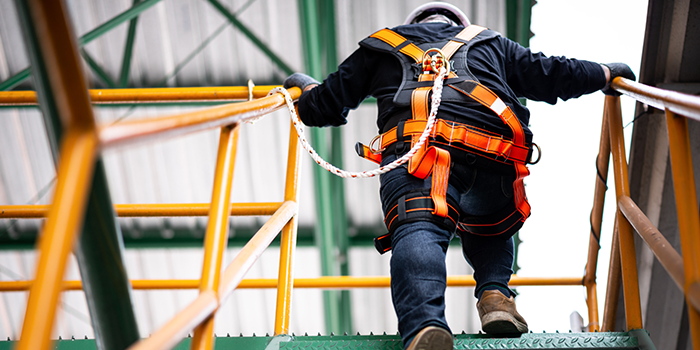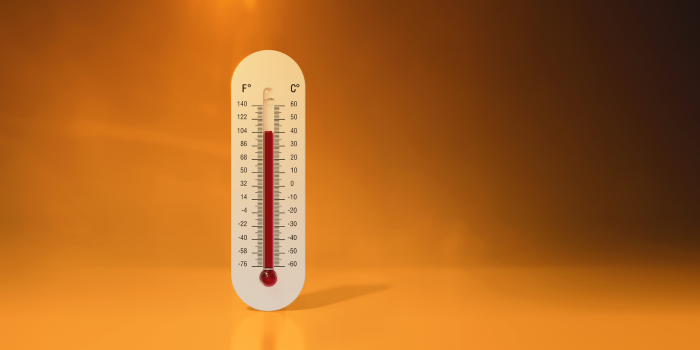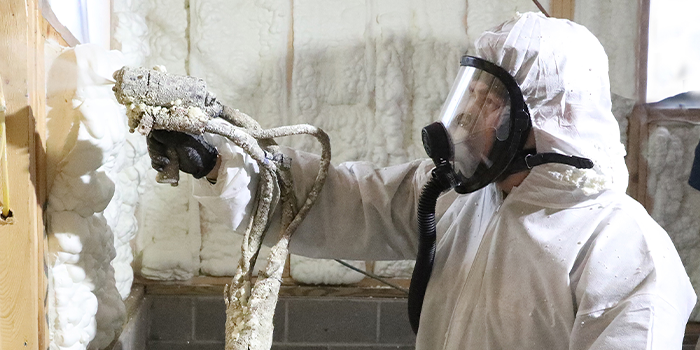Great Balls of Fire
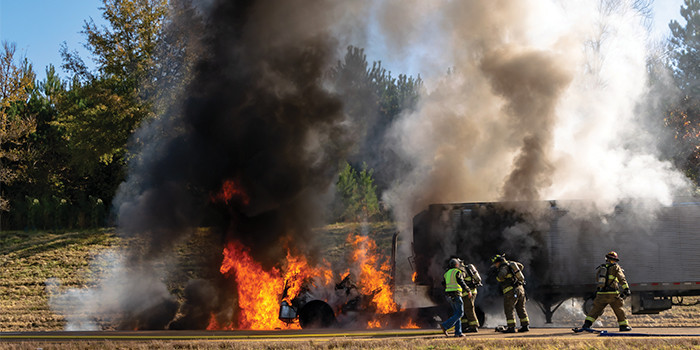

Spray Foam Magazine – Spring 2022 – Certain features can increase the risk of a fire within a spray foam rig, but how can these risks be decreased? A few contractors weighed in with first-hand experience on what it means to get a little hot in the rig.
From compressors catching fire and igniting drums of polyurethane to a wiring harness short circuiting, or even a gas-powered generator igniting, there are numerous ways a rig can catch fire.
One of the main things to consider when purchasing a rig is to stick with a reputable spray rig dealer who will have parts, repair, service, professional training, and tech support.
It is recommended a rig have at least four fire extinguishers on board—three for the rig, one in the cab, one in the generator room, one at the back door of the rig, and one to bring into the building that is being sprayed, just in case you need it.
Make sure to check all electrical plugs and outlets for any loose wiring and replace any damaged parts or wires. Remember, loose wiring can arc and overheat which create a fire hazard.
Douglas Haeberer, Owner of Cutting Edge Spray Foam Services (Ulster County, NY)
I've been in the industry for about 16 years. I started off by myself with a trailer and slowly built myself up to having a few trucks and about five crew members. I live in New York state in the Hudson valley, so it gets cold here in the winter. I have a 220-volt ceiling hung fan forced electric heater in my rig to keep it warm while we’re spraying. The heater has a regular 220-volt plug on it. Apparently one of the wires got loose inside the plug, crossed over and the wire started to catch fire. I’m still baffled why the breaker didn’t blow as everything was done by a professional electrician. I was working in a crawl space doing my thing and I decided to take a break. I went into the back of the truck and that’s when I saw the electrical wire burning. I have an electrical fire extinguisher on board, so I activated that, put out the fire, turned off my machine, and killed the generator. Then I unplugged the plug to inspect it and saw one of the wires loosened up. I was fortunate that I did come out to the rig when I did because if I hadn’t, the chances are it would have gone up in flames.
My advice is to check your plugs occasionally if you don’t have the molded-on ends, they can loosen up over time from getting knocked around and tugged on. Looking back at that situation and how it could have been avoided, the heater should have just been hardwired in but that was a little bit difficult for our situation since we must plug that heater into house power when we get home.
Check your plugs occasionally, boys and girls. I do carry a very good policy for truck insurance, but you must look at it like “this is your livelihood and it’s worth spending some money to preserve it.” One of my competitor’s rigs caught fire and I was talking to him on the phone about what happened, and when I asked if he had insurance, he said to me, “I always thought it was a waste of money to put it on my own rigs regarding equipment.” Well, I guess he thinks differently now.
Eric Gladson, Owner of Integrity Plus Insulation LLC (Prentice, WI)
I’ve been in the spray foam industry for about 11 years, the last nine of them owning my own company, Integrity Plus Insulation LLC. Integrity Plus serves Northern Wisconsin with closed-cell spray foam and concrete lifting services. I am a PCP Certified Master Installer through the SPFA PCP Certification program as well.
I was working for a good repeat customer that has been remodeling their house a few rooms at a time. The quick kitchen wall I needed to insulate was the last piece before they could begin putting their kitchen back together. That all changed when the customer came running in and spoke those words no contractor wants to hear. “Hey! Your trailer is on fire!!"
I’m not really sure what the chain of events was or what happened to start the fire. Something got too hot and burst into flames on my compressor, which is run by my genset.
Being a volunteer firefighter, I carry fire extinguishers in both my truck and my foam rig so they can be accessed no matter where the fire is. The first thing I grabbed when I got to my rig was my fire extinguisher. Then, as the simple acronym goes: PASS = Pull the pin, Aim at the fire, Squeeze the handle, Sweep the hose back and forth to put the fire out.
I think the only thing different that I would have done (and will be doing) was have my extinguishers mounted on a wall bracket. I had mine sitting on the floor behind my garbage can, so if there’s things to move out of the way it slows down the response time.
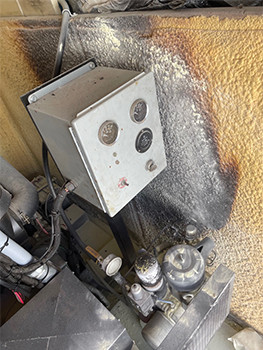
I’m happy to have rig insurance. An inland marine policy is super important for events like this, should they occur. Josh Cotner and Spray Foam Insurance has provided the correct coverage for each item in my rigs. Josh has been awesome fighting for me to get my rig taken care of and fixed, since the adjusters have been dragging their feet in the whole process. Josh has been in constant communication with the adjuster on my claim in order to keep things moving forward on repairs.
With rental reimbursement coverage, I am able to continue working while my rig is getting fixed. I currently have the Spray Foam Rescue Rig, which was put together by Josh a few years ago for clients that have issues such as fire or theft so they are able to continue working. I participated in the epic unveiling of the Rescue Rig in Houston a few years ago, not knowing that it was only a matter of time I would be using it to keep my jobs on schedule and going.
Thankfully we were able to catch this fire before it turned tragic. There are fire suppression systems available to install throughout a rig that will automatically deploy when it detects there is a fire. I’m sure they’re a little pricey, but saving a rig from a fire and having minimal damage compared to a total loss would be the better way to function.
Make sure your extinguishers are ABC Rated extinguishers, have plenty of charge in them and mount them in an easily accessible area. Occasionally the powder will settle and cake in the bottom, so turn the extinguishers upside down and with a rubber mallet, tap on the bottom a few times to loosen the power in the extinguisher.
Thomas Rizza, Owner of Solid Foam Solutions LLC (Ogallala, NE)
I got started in the industry because my boss was needing to spray his own building. We bought a rig and I sprayed out of that same rig for six years. I bought the company from him in 2020.
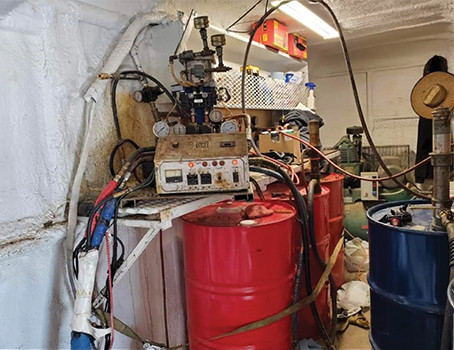
The rig fire happened at a house I was doing a flash and batt job on by Lake McConaughey. My rig at that time was a 12ft shore power Gusmer FF-1600 rig. The fire happened in the wiring harness on the proportioner itself. While I was spraying, I suddenly lost pressure and was unable to spray. This had happened quite a few times that day, so I was really frustrated. When I went to repressure and continue to spray, I walked out of the house and there were four to five foot flames coming out of the closed back doors of the rig.
It took a second for me to realize what was happening, but as soon as I did, I went into the side door and grabbed my fire extinguisher and went to the back door, opened it and immediately sprayed the fire with the extinguisher to put it out. There was really nothing I could do to prevent what happened, it was a simple short on the main power switch and the wiring caught fire, as well as paper towels and gloves that were on the workbench next to it. I did have local construction insurance and was fully covered, so I now have a new machine in a new trailer. I have since changed my insurance to The Contractors Choice Agency with Josh Cotner and have expanded my business.
RIG SAFETY ADVICE from Josh Cotner, Spray Foam Insurance
1. Contractors need to be able to rely on their tools and equipment in order to earn a living and support their families. They have tight deadlines that require them to have expensive equipment in working order. If they lose the opportunity to earn a profit on a job when they have had a project in their pipeline, spent marketing money on, purchased material/equipment, have employees scheduled it could be disastrous. Having rig insurance is critical because they need to replace their equipment, tools, and material in the event of a claim to keep operating.
2. Rig insurance covers fire, theft, lightning, windstorm, car accidents, and sometimes liability to others also. We can write two types of rig insurance policies. One that includes liability insurance and property insurance, or commercial auto insurance, and another property insurance policy called inland marine that covers the trailer and anything bolted to it, small tools, and materials. There are pros and cons to writing the auto insurance like you have to have a pulling unit so we have to list a truck or vehicle that can pull the trailer. However the auto insurance is cheaper if you only consider the trailer cost and not the cost of insuring the truck, which should be insured on a commercial auto policy already but oftentimes people just getting started have personal auto for a little bit. It is really difficult to manage the high costs of insurance when the economy is the way it is during the pandemic. It is important to know what is covered and what is not (like spoilage due to cold). Rig insurance could cover the cost of repairs including tow to the manufacturer depending on the policy you choose.
3. The important thing to do is to file the claim immediately. I had a guy submit a claim a year late. He reported an entire rig loss a year after it happened instead of quickly. The insurance carriers RED FLAGS were up to say the least. The poor guy also didn’t get reimbursed for a year. Imagine struggling to make ends meet and not have what you need to do the job at hand. It is important to review the claim with your independent insurance agent prior to submitting the claim for loss to review the obligations of the insurance carrier and review coverage. Some carriers have a 2 day hold on rented equipment so you want to make sure and submit the claim for that coverage also.
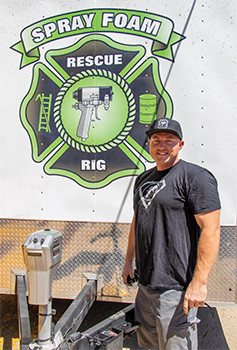
The Spray Foam Rescue Rig was put together by Josh Cotner with equipment donations from sponsors so that clients can continue to work on their spray foam jobs if an accident occurs on their rig.
4. Do upfront underwriting. Have your equipment listed on your policy individually. If your equipment is on your policies, you individually have made it easy for the adjuster to do their job. Having your invoices ready for your equipment purchases is important. Also please review your insurance policies annually for price increases, equipment changes, and other details.
5. ACV versus RCV: Actual Cash Value is the price you paid minus depreciation for age and wear and tear. Replacement cost is the cost to fix your stuff but doesn’t subtract for depreciation, wear, and tear.
Disqus website name not provided.





